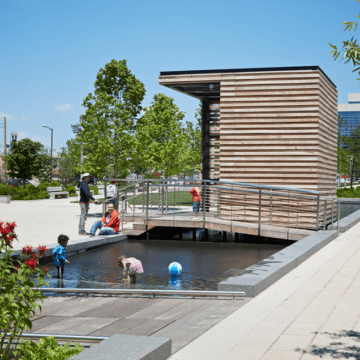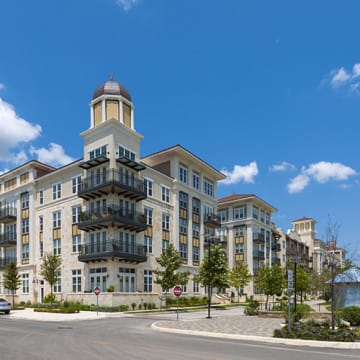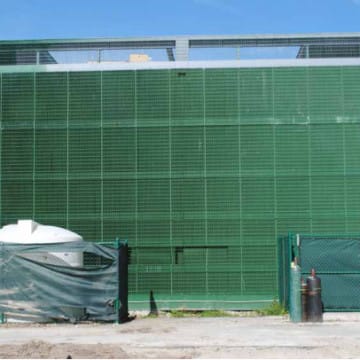Meander Bend Park
Meander Bend Park is an 18-acre space in Pima County, Arizona, that has been designed to mitigate future climate change risks with a triple-bottom-line (TBL) cost-benefit analysis. The team involved developed an innovative TBL model that accounts for future climate conditions to help determine the most cost-effective landscape design features to mitigate extreme heat, drought, and fluvial flooding. The result of the analysis is a replicable, strategic method for prioritizing climate mitigation projects and convincing evidence that the value of green infrastructure will increase significantly with time.
Context
The goal in using TBL software was “to focus on the projects that give us the highest benefit,” said Marie Light, program manager for the Pima County Department of Environmental Quality. The idea was to design one park as a test case for the TBL analysis before using the software for other green infrastructure projects across the county.
In total, the TBL cost-benefit analysis for Meander Bend Park yields an estimated $9.8 million in TBL net present value (NPV) over 50 years. The TBL NPV is a result of quantifying the value of the social and environmental benefits of the resilience and sustainability features in the park design less the value of project costs. Some of the social and environmental factors considered in the analysis include property value, risk reduction, and recreational value. Capital expenditures as well as operation and maintenance (O&M) costs are subtracted from the TBL NPV as project costs.
Pima County chose Meander Bend Park as the pilot because of its location; in a high-temperature/low-tree-canopy area, the creation of this park will create a pleasant recreation area for residents of the nearby middle-income neighborhood and users of the Loop, an adjacent regional biking/walking trail.
“Understand that sustainability isn’t ‘a nice to have.’ Sustainability can have demonstrable impacts on your own bottom line, so you need to consistently value the broader benefits.”—Simon Fowell, Economist, Autocase
Meander Bend Park is located along a bend in the Santa Cruz River that was isolated during the 1980s by a bank stabilization and floodwater control project. This meander in the river was not required to carry the floodwater volume; therefore, it was cut off from the main river channel, leaving a large void. The Regional Flood Control District partnered with landscape architecture Wheat Design Group for the design and with analytics specialist firm Autocase to analyze the proposed plan.
After the TBL analysis was complete in early 2018, the Regional Flood Control District began filling the void with sediment dredged from the river, which has the additional benefit of increasing the river’s flood capacity. As soon as the void is full, the county will begin installing the planned stormwater harvesting infrastructure, vegetation, and amenities.
Even though construction of Meander Bend Park is not yet complete, the climate-aware TBL approach and the new site plan demonstrate methodologies and best practices that can be incorporated into a variety of green infrastructure and landscaping projects.
Innovation
A New Model for Climate Projections
Instead of following the standard process of using temperature data from the past 30 years, Autocase built a new model to calculate social, environmental, and economic benefits under projected climate conditions 30 years in the future.
Arizona is one of the fastest-warming states in the United States. Pima County’s average temperature is 2°F warmer today than its pre-industrial average, and property damage from dangerous heat days, severe storms, flooding, and other extreme events amounts to more than $9.4 million in Pima County each year.
The team worked together to define assumptions and gather the data necessary to build a model that would realistically represent future climate. First, they chose a high-emissions scenario (IPCC RCP 8.5) in which there is little to no climate policy action and high rates of greenhouse gas emissions. Next, specific regional values for the climate model were drawn from NOAA data sets and from research conducted locally by University of Arizona scientists. The county and district contributed localized information so that Autocase could successfully model not just future climate but small-scale microclimates (and stormwater and rainwater harvesting capacity) created by the variety of desert and mountainous landforms in and around Pima Country.
Urban Heat Island Mitigation
Incorporating future climate was key to accurately pricing the benefits of urban heat island (UHI) mitigation. While it is becoming more common to consider the long-term impacts of UHIs on infrastructure, comprehensively internalizing the mitigation benefits remains a challenge.
An essential step was determining how the park design would reduce temperatures (as well as energy use) in the area. The software then uses the relationship between temperature and heat stress to measure the factor by which mitigation reduces heat mortality. With green infrastructure, Autocase economist Simon Fowell elaborates, “there’s a lower likelihood of people falling ill from heat stress.”
Climate and User-Aware Landscape Design
Another unique aspect of this project was that the team had the opportunity to understand how each of the design features would affect the overall climate performance of the park. The team used the TBL cost-benefit analysis software to evaluate the upfront capital and O&M costs of different storm- and rainwater management options.
The opportunities to make changes—such as increasing the size of an infiltration basin and including tree species with wider canopies to increase shade cover—also improved the final performance.
Part of the TBL analysis includes social factors such as the number and types of visitors to the site. “That makes you think, ‘What kind of amenities should I be using to get more visitors there?’ or thinking about different seasonal amenities so someone can comfortably use the site every day of the year,” says WDG designer Alex Stoicof.
When complete, Meander Park will have native vegetation for shade and food production, infiltration basins, a rainwater harvesting ramada and cistern, vegetated swales, places of respite, and a connection to the Loop regional recreation trail.
Value Creation
The results of comparing the value of the green infrastructure plans under current and future climate scenarios are striking.
“What we found was that the benefits of green infrastructure are twice as large when you factor in climate change and future temperature projections.”—Simon Fowell, economist, Autocase
The Autocase analysis for Meander Bend Park shows an estimated $9.8 million in triple-bottom-line net present value of social and environmental benefits over a 50-year time horizon relative to the base case scenario. The value of heat island mitigation is the second-most contributing factor in this analysis, with an estimated value of $1.8 million over 50 years under the RCP8.5 climate scenario. Even under a “business as usual” scenario using historical temperature data, UHI mitigation is valued at $0.9 million.
The combination of drought-tolerant landscaping and the inclusion of a water harvesting ramada also eliminates the need to import irrigation water. This self-reliance is critical in Tucson, where the potable water supply is at risk due to regional water shortages and drought. In response, Evan Canfield of the Regional Flood Control District explains:
“It is important to develop designs that rely on locally available water supplies like rainwater and stormwater, while still providing amenities to the community.”—Evan Canfield, civil engineering manager, Regional Flood Control District
In total, the TBL results of the green infrastructure stormwater design (considering factors such as capital expenditure, water costs, water quality benefits, and others) show environmental and social benefits that are over six times the cost of capital expenses and operation and maintenance.
The public has responded positively to the level of detail in the analysis. Pima County administrators concerned about municipal credit ratings have also been pleased to see proactive action to account for extreme weather.
Even though the majority response has been positive, there are some who are wary of the triple-bottom-line approach because it is a departure from the traditional method of evaluating green infrastructure on a per-unit basis. However, “it’s really hard to get a per-unit cost,” explains Marie Light, because “the value of above-ground green infrastructure depends on its location within the urban area.”
Meander Bend Park was just a test case; Pima County is creating and evaluating plans for other park renovations using the TBL-CBA approach and the climate projection model developed during this project.
Lessons Learned
- The value of green infrastructure will likely increase under future climate projections. While there is a return under current and future climate conditions, the triple-bottom-line analysis found the benefits of green infrastructure to be twice as large for this pilot project when considering climate change and future temperature projections.
- Consideration of climate impact and user experience leads to different landscape design. Understanding the climate hazards and the criteria by which a design will be evaluated can improve the overall performance and value of a park.
- Accurately valuing urban heat island mitigation is a challenge and an emerging specialty. There are still many unqualified factors. Expect continued refinement and sophistication of the tools to meet the increasing demand from the public sector to quantify the benefits of mitigating extreme temperatures.
Resources
- Interviews with: Alex Stoicof, designer, Wheat Design Group; Evan Canfield, civil engineering manager, Regional Flood Control District; Interview with Marie Light, program manager, Pima County Department of Environmental Quality; Simon Fowell, economist, Autocase.
- Autocase. Triple Bottom Line Cost Benefit Analysis of Green Infrastructure for a Proposed Meander Bend Park and the Southern Arizona’s Children Advocacy Center for Pima County. 2018.
- Garfin, Gregg, Guido Franco, et al. “Southwest.” Climate Change Impacts in the United States: The Third National Climate Assessment. 2014.
- Bakkensen, Laura A., and Riana D. Johnson. “The Economic Impacts of Extreme Weather: Tucson and Southern Arizona’s Current Risks and Future Opportunities.” Making Action Possible in Southern Arizona. 2017. Online.


